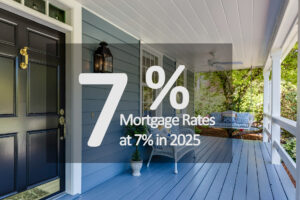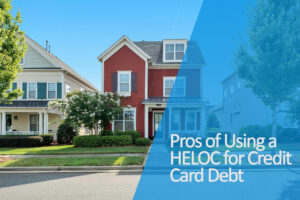Buying your first home is one of the most exciting — and financially significant — decisions you’ll ever make. But before you start browsing listings or hitting open houses, it’s important to understand how mortgages work and what you need to do to prepare.
This guide breaks down the mortgage process for beginners so you can start your path to homeownership with confidence and clarity.
What Is a Mortgage?
A mortgage is a loan you use to buy a home. You borrow money from a bank or lender, then repay it over time (usually 15 to 30 years) with interest. If you stop making payments, the lender has the right to take back the home — this is called foreclosure.
Step 1: Know How Much Home You Can Afford
Before you fall in love with a house, figure out what’s realistic for your budget.
Lenders look at:
- Your income
- Your credit score
- Your debt-to-income ratio (DTI)
- Your savings (for down payment & closing costs)
Use an online mortgage calculator to estimate your monthly payments, then factor in property taxes, homeowners insurance, and maintenance.
Step 2: Understand the Types of Mortgages
Not all home loans are the same. Here are the most common:
1. Conventional Loan
- Not backed by the government
- Usually requires a 5–20% down payment
- Better rates for borrowers with good credit (680+)
2. FHA Loan
- Backed by the Federal Housing Administration
- Only 3.5% down if your credit score is 580 or higher
- Great for first-time buyers and those with limited savings
3. VA Loan
- For veterans and active military
- No down payment required
- No private mortgage insurance (PMI)
4. USDA Loan
- For rural and suburban homebuyers
- No down payment if you qualify by income and location
Step 3: Check Your Credit and Start Improving It
Your credit score plays a big role in:
- Whether you qualify for a mortgage
- What interest rate you’ll get
Ideally, aim for a score of 620+ for most loans, and 740+ for the best rates. If your score needs work:
- Pay down credit cards
- Make all payments on time
- Dispute any errors on your credit report
Step 4: Save for a Down Payment and Closing Costs
- Down payments range from 3% to 20% of the home price
- Closing costs can add another 2–5%
- Some lenders offer assistance programs for first-time buyers
Tip: The more you put down, the lower your monthly mortgage payment.
Step 5: Get Pre-Approved
Before you start house hunting, get pre-approved by a lender. This shows sellers you’re serious and tells you how much you can borrow.
To get pre-approved, you’ll need:
- Proof of income (pay stubs, tax returns)
- Bank statements
- ID and Social Security number
- Permission for a credit check
Step 6: Choose the Right Mortgage Term
- 30-Year Fixed: Lower payments, more interest over time
- 15-Year Fixed: Higher payments, faster payoff, less interest
- Adjustable-Rate Mortgages (ARMs): Lower intro rate, but riskier long term
Most first-time buyers go with a 30-year fixed for predictability and lower monthly costs.
Final Thoughts
Getting a mortgage can feel intimidating, but it doesn’t have to be. With the right prep and understanding, homeownership becomes a realistic, achievable goal.
Start with your credit. Know your budget. Learn your loan options. And when you’re ready, work with a trusted lender who’ll guide you every step of the way.
Coming soon: A free first-time homebuyer checklist and mortgage term comparison guide.
Have questions about pre-approval or FHA vs. conventional loans? Drop a comment below — we’re here to help!




